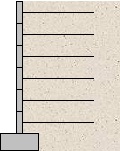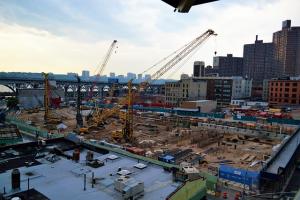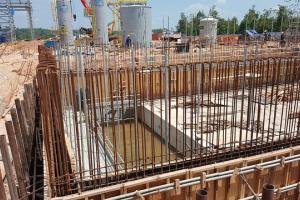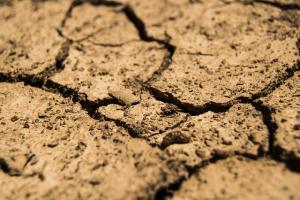Types of Earth Retaining Structures
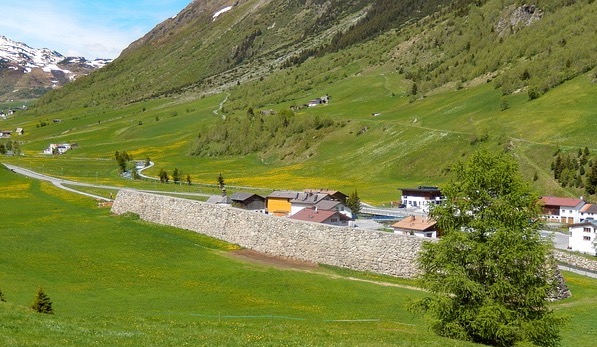
Earth-retaining structures play a vital role in civil engineering and construction, providing stability and preventing soil erosion or collapse. These structures are designed to withstand the lateral pressure exerted by soil or other materials, ensuring the safety and integrity of infrastructure. Various types of earth-retaining structures have been developed, each with its own unique design and construction methods. Understanding these types is essential for engineers and construction professionals involved in projects that require the retention of soil or materials. In this overview, we will explore some common types of earth retaining structures, including gravity-retaining walls, cantilever walls, counterfort walls, sheet pile walls, and more. By delving into the characteristics and applications of these structures, we can gain valuable insights into the diverse techniques employed to achieve stability in different geological and environmental conditions.
Retaining structures:
The structure used to retain or support the material/soil is called a retaining structure. e,g retaining walls, which may be of RCC, brick or stone masonry or sheet piling, etc.
Retaining walls:
A retaining wall is a structure designed to sustain the material pressure of earth or other materials such as grains, ores, etc
Surcharge:
The material which lies above the horizontal level of the retaining structure is known as a surcharge. The angle which this material makes with the retaining wall is called the surcharge angle.
Types of Earth Retaining Structures
Retaining walls:
A retaining wall is a structure designed to sustain the material pressure of the earth or other materials such as grains, ores, etc.
"The Structures that are built to retain soil, clay, gravel, stones, etc through its weight or flexural ability are called earth retaining structures"
There are different types of earth retaining structures such as gravity-retaining structures, cantilever-retaining structures, etc all of them perform the same function using different behavior towards detainment. Earth retaining structures sometimes also called retaining walls plays a vital role in the field of Structural Engineering, Geo-technical Engineering, Transportation engineering, water resources engineering, and many other fields of civil engineering.
Gravity Retaining wall structure:
It is the simplest of all and is made up of:
- Concrete
- Brick Masonry
- Stone Masonry
The gravity wall retains the backfill due to its weight. It is also much thicker in section. Gravity retaining walls rely on their own weight to resist the lateral pressure of the soil. They are typically made of heavy materials such as concrete, brick masonry, or stone masonry. Concrete gravity walls are constructed using reinforced concrete or plain concrete blocks. Brick or stone masonry gravity walls use bricks or stones to create a stable structure.
Cantilever Retaining Wall:
Cantilever retaining walls are reinforced concrete structures that use a lever arm to resist soil pressure (It resists pressure due to its bending action). The Cantilever wall is usually made up of R.C.C. It is more convenient and economical to use. Rankine's and Coulomb's theories can be used to find active earth pressure on the wall. They consist of a relatively thin vertical wall connected to a base slab or footing, with an inclined section called the heel at the base. The soil pressure on the wall is counteracted by the weight of the wall and the moment generated by the heel.
Counter Fort Retaining Wall:
Counterfort retaining walls are similar to cantilever walls but have additional vertical concrete members called counterforts and are much longer compared to a cantilever wall. If it is to be used for even longer distances, some supports are provided to it at required intervals. The counterforts are spaced at regular intervals along the wall and act as supports, transferring the lateral soil pressure to the foundation. This design provides additional strength and stability to the wall, allowing it to withstand higher loads and taller heights compared to cantilever walls.
Sheet Pile Wall structure:
In sheet pile walls thin sheets are used which are driven through the soil up to the required depth. It cannot resist very high pressure. Sheet pile walls are light in weight as compared to the other typed of retaining walls and are used where the soil strata are weak, especially when the upper strata are weak. Some supports are provided to it for high resisting pressure. Sheet pile walls are made of interlocking steel, vinyl, or wood planks driven into the ground to create a continuous barrier. They are commonly used in areas with limited space or where excavation is not feasible. Sheet pile walls resist lateral soil pressure through the bending strength and embedment of the individual sheet piles.
Anchored Retaining Wall:
Anchored retaining walls use cables or other tensioning elements to provide additional support and prevent wall movement. These walls are typically used in situations where the soil pressure is high or where the retained material is particularly heavy.
Gabion Wall Structure:
Gabion walls are constructed using wire mesh baskets filled with stones or other granular materials. The baskets are stacked together to form a retaining wall that allows water to pass through while providing stability to the soil.
Mechanically Stabilized Earth (MSE) Wall:
MSE walls combine soil reinforcement materials, such as geogrids or geotextiles, with compacted backfill soil to create a stable structure. The reinforcement materials improve the tensile strength of the soil and distribute the lateral pressure more effectively.
Tiedback Retaining Wall:
Tiedback retaining walls are the type of earth retaining structures similar to anchored walls but use steel rods or cables that are anchored into the soil or rock behind the wall. The tiebacks provide additional resistance against soil pressure and are tensioned to maintain the stability of the wall.
These are just a few examples of the different types of earth-retaining structures. The choice of a particular structure depends on factors such as soil conditions, site constraints, load requirements, and aesthetics. Consulting with a qualified engineer is recommended to determine the most suitable retaining wall design for a specific project.


